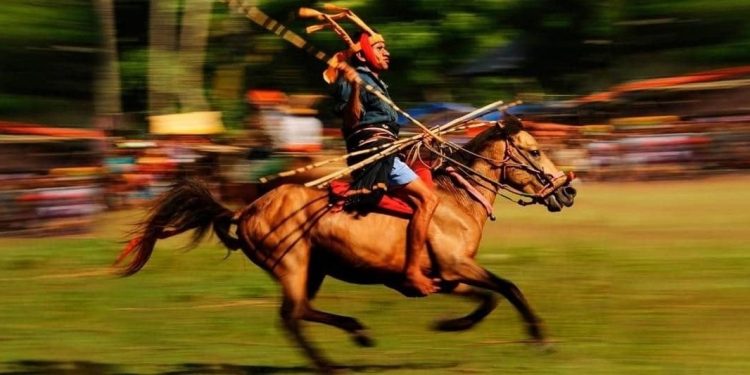The Sandalwood pony of Sumba is the only breed of horse in Indonesia that is still intrinsic to the local economy, culture, and religion.
The Sandalwood pony of Sumba is a spirited and nimble animal with good stamina and a friendly disposition.
Named as the Sandalwood pony after the scented trees that once covered the island, and is also the only breed of horse in Indonesia that is exported overseas: as children’s ponies in Australia and racehorses in Singapore, Malaysia, and other parts of Southeast Asia.
They are also sought after by abattoirs in the Indonesian province of Sulawesi where horse meat is a delicacy.
But the proliferation of motorbikes coupled with perennial drought in Sumba, some 800km (497 miles) east of Bali, is forcing more people to migrate from rural to urban areas and some worry the pony is being left behind.
Claude Graves, an American hotelier, and philanthropist who has lived on and off in Sumba for 40 years said, “Motorbikes are now more valuable than horses on this island. The culture is dying. Only the Pasola has been keeping it going.”
Horse trading
One of eight official horse breeds gazetted in Indonesia, Sandalwood ponies have small ears, a short muscular neck and an unusually long back. Their lineage dates back to the eighth century when traders from China first visited Indonesia.
“They’re called Sandalwood ponies because the Chinese swapped Mongolian ponies for sandalwood with the locals,” Carol Sharpe, an expert in natural horsemanship from Australia who founded the stables at Nihi Sumba.
“Later they were bred with Arabian horses brought by traders from the Middle East. The Arabian is naturally a very flighty horse while the Mongolian is also fast but stockier with more stamina, so it’s a very good mix. But they’re not good for labor because of their small stature, probably because of centuries of malnourishment. There’s lots of grass on the island but most of it is not nutritious.”
But the Sumbanese, who practice Catholicism or Islam peppered with animism, found plenty of other uses for the ponies: transport, status symbols, dowry payments, sacrifices for funerals and as vehicles to store wealth.
In the 1930s, Dutch colonists introduced circuit-style horse racing to the island.
A racehorse breeding industry that crosses Sandalwood ponies with Australian Thoroughbreds also emerged and is now dominated by Indonesians of Chinese heritage. But many breeders in Sumba have little concern for the welfare of their animals, according to Sharpe.
Despite their general poor health, Sharpe recognizes the larger-built Thoroughbred-Sandalwood crossbreeds are better suited for activities at the resort than Sandalwood ponies and went about building a herd.



